Abstract
Surface electromyography has been used to study the initial reflex response of various muscles to vibration, applied to their tendons, when the subject was already contracting them voluntarily. The response at the onset of vibration was of a latency appropriate for Ia monosynaptic action and was always highly phasic with an initial wave rising far above any maintained increase in electromyogram (e.m.g.) activity; its duration was typically well below 20 ms in the rectified average. Thus, there is nothing peculiar, in this respect, about flexor pollicis longus for which such behaviour has already been described, and used to draw certain wide-ranging conclusions about the stretch reflex. Theoretical considerations, developed in an Appendix, show that quite apart from the operation of any inhibitory mechanisms such a phasic response is to be expected from a population of tonically discharging motoneurones when there is a step increase in the level of their excitatory drive.
Full text
PDF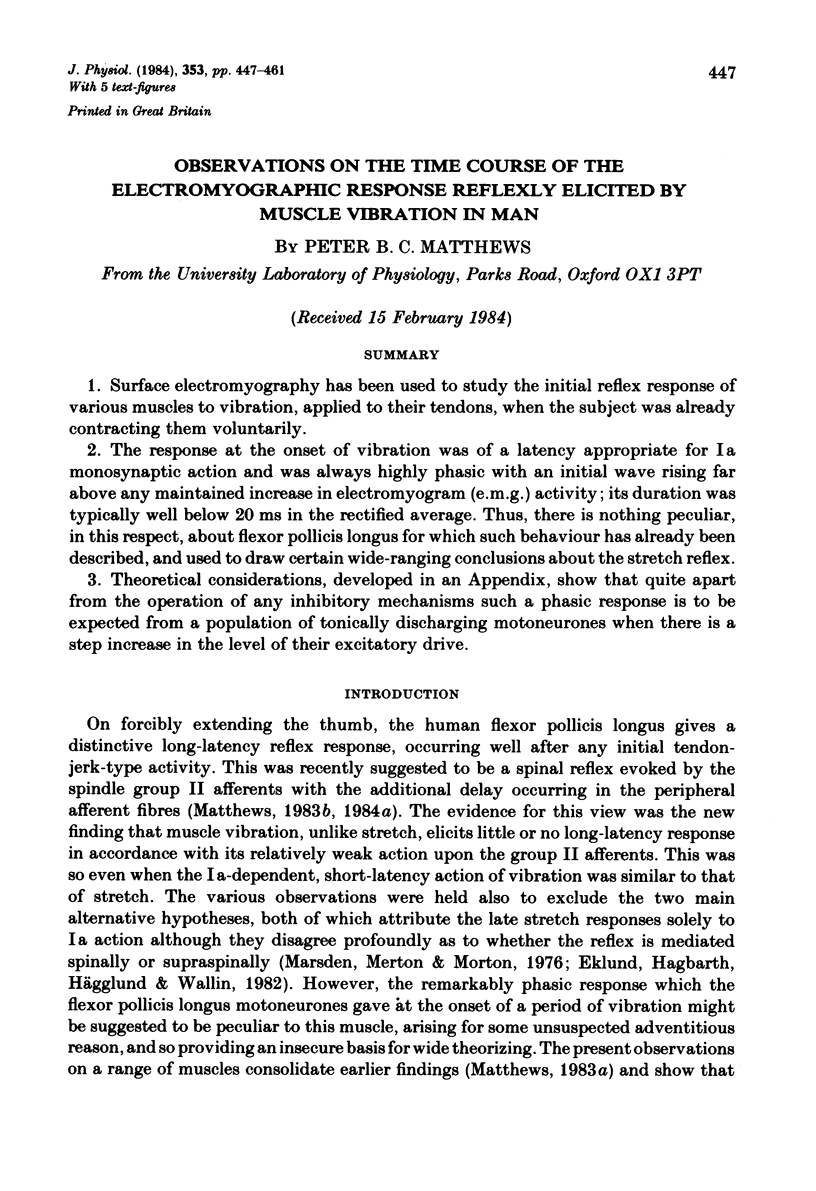

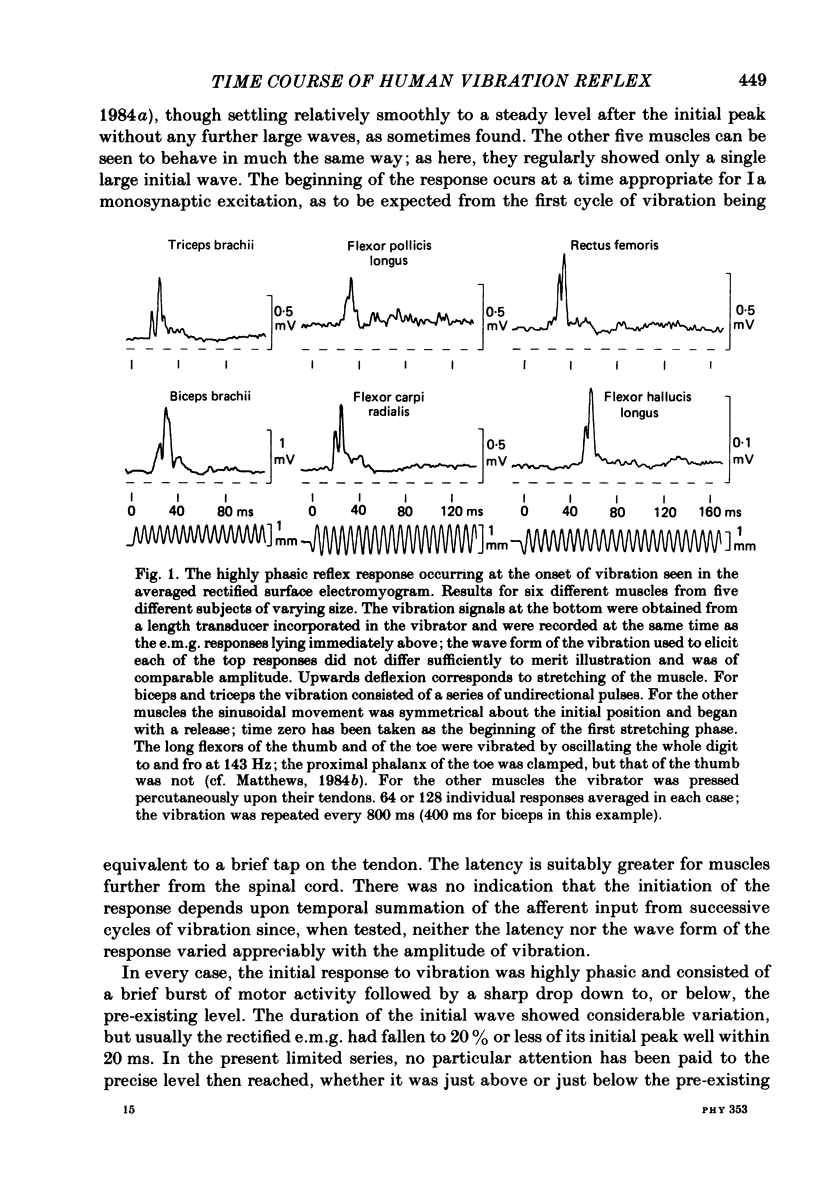

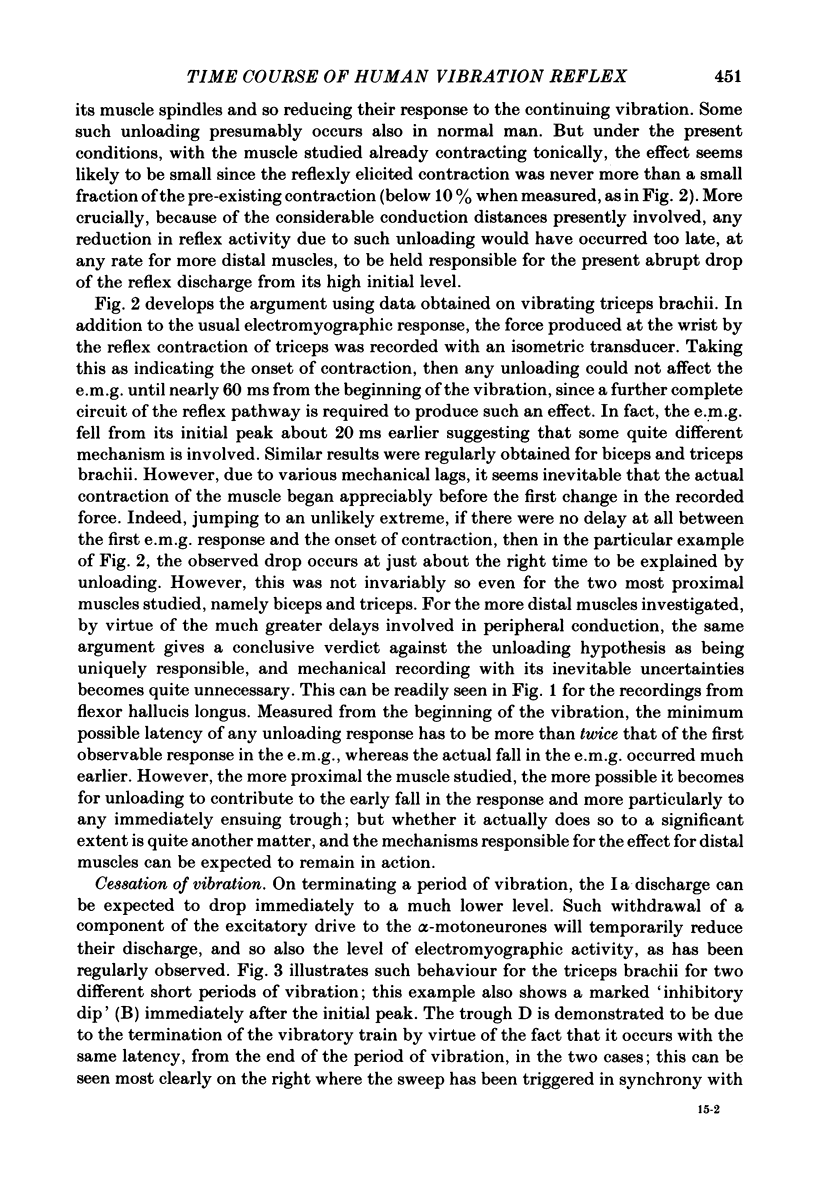
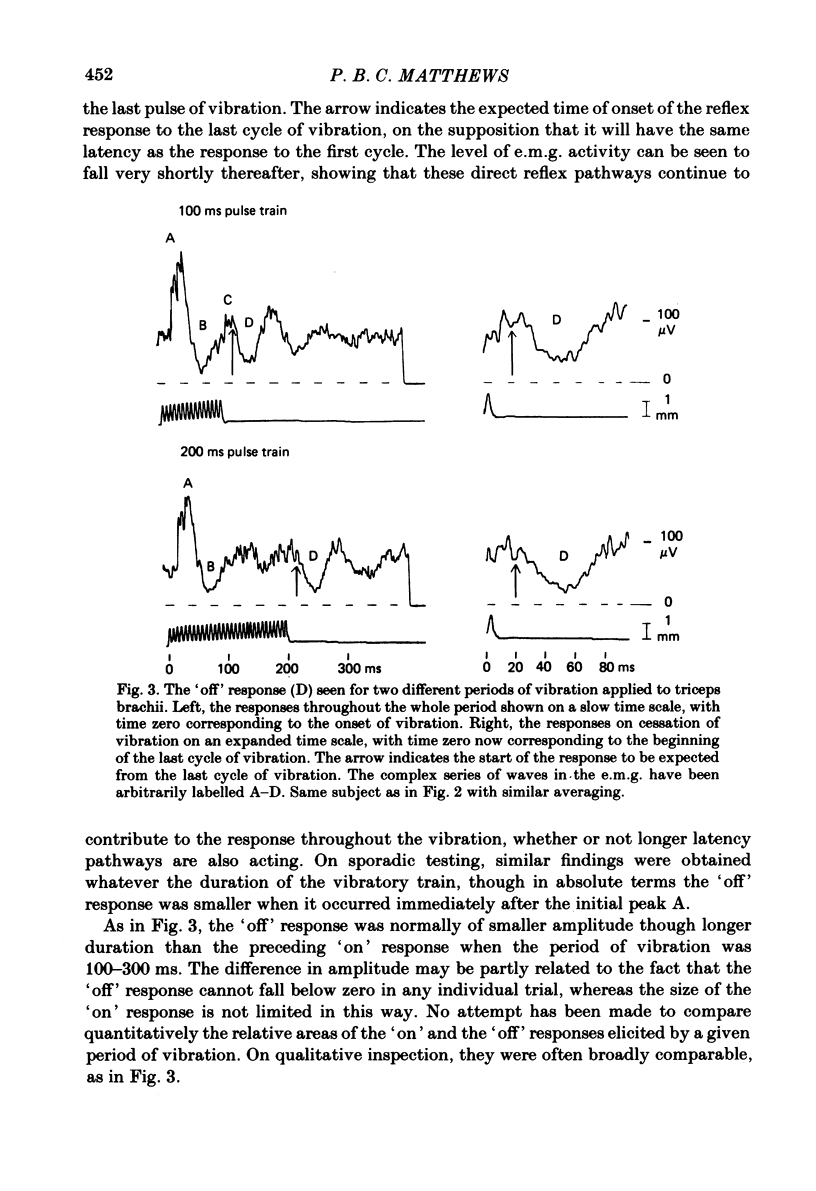
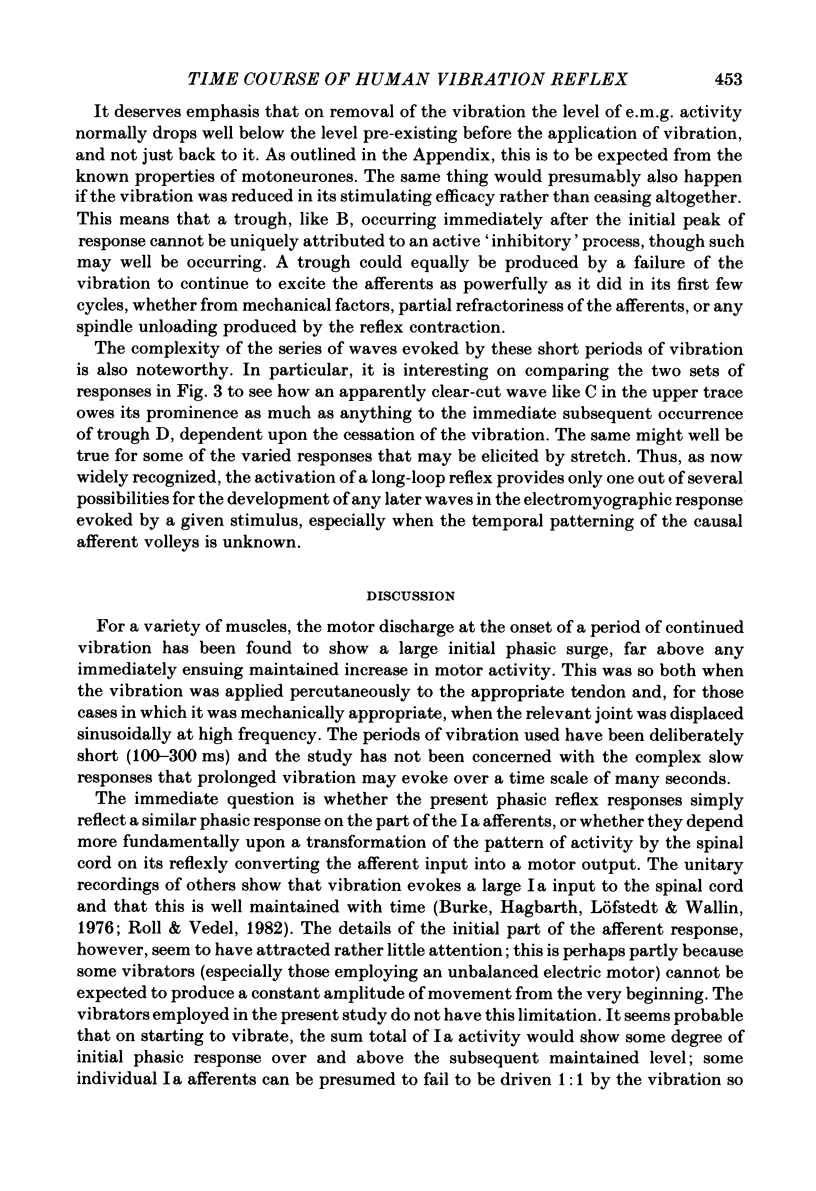

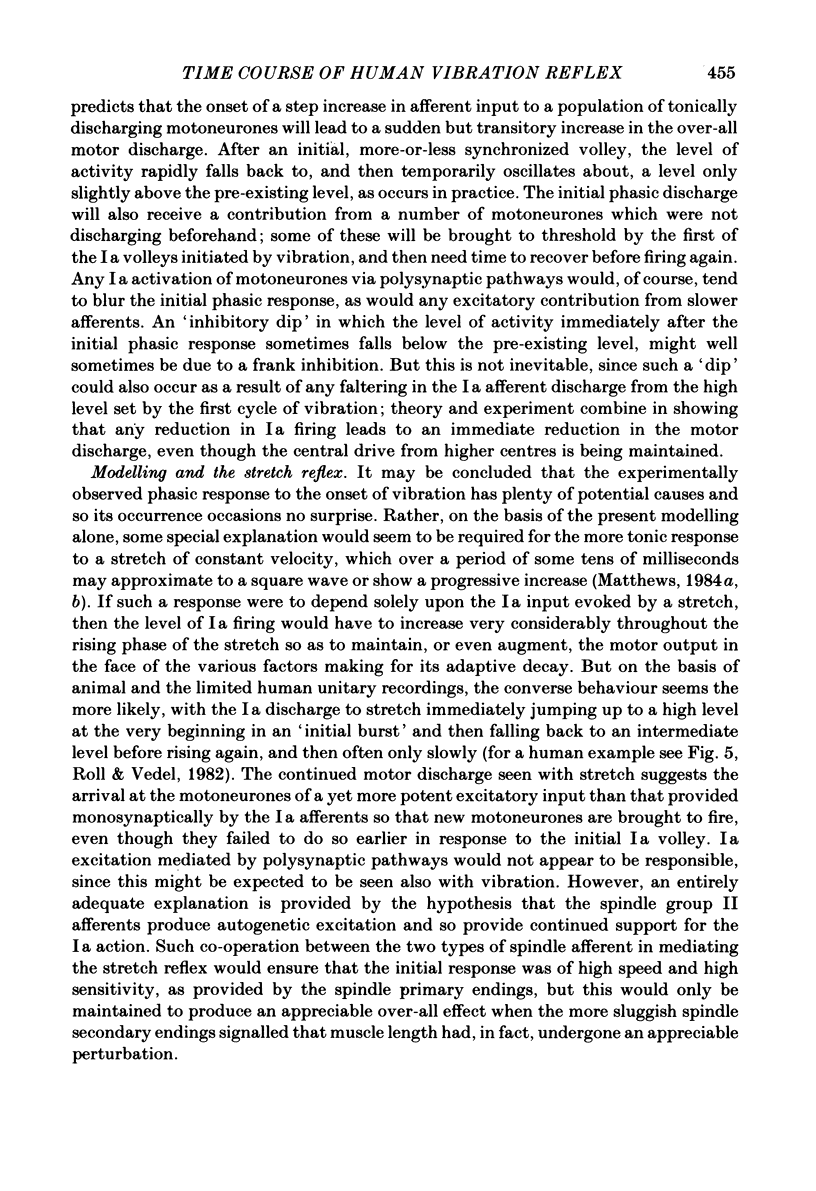
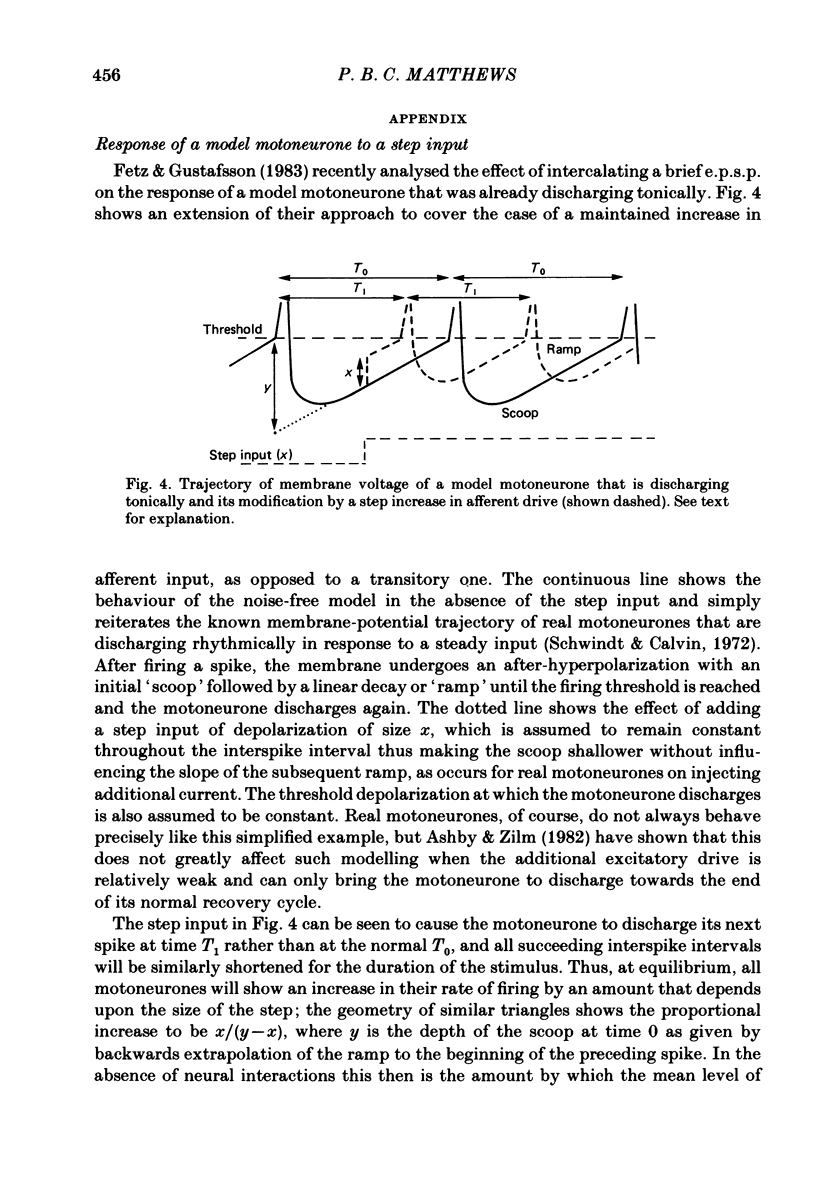
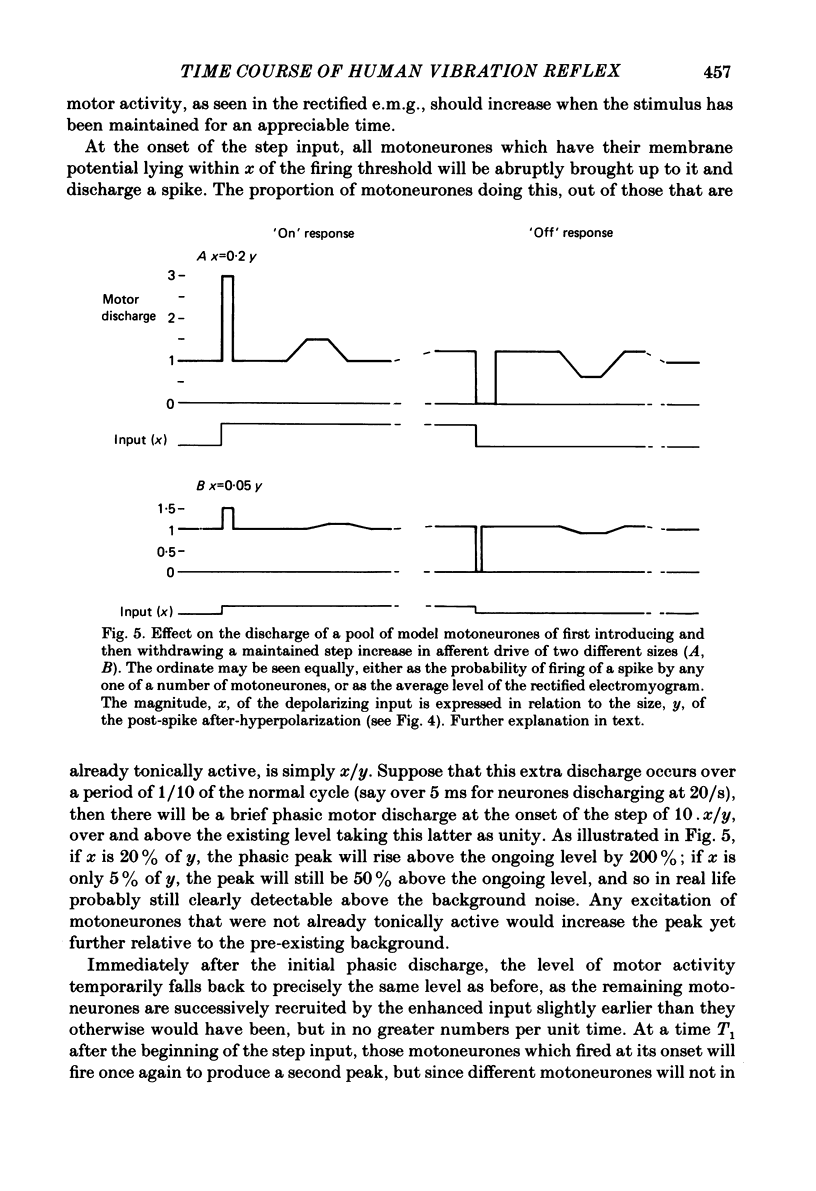
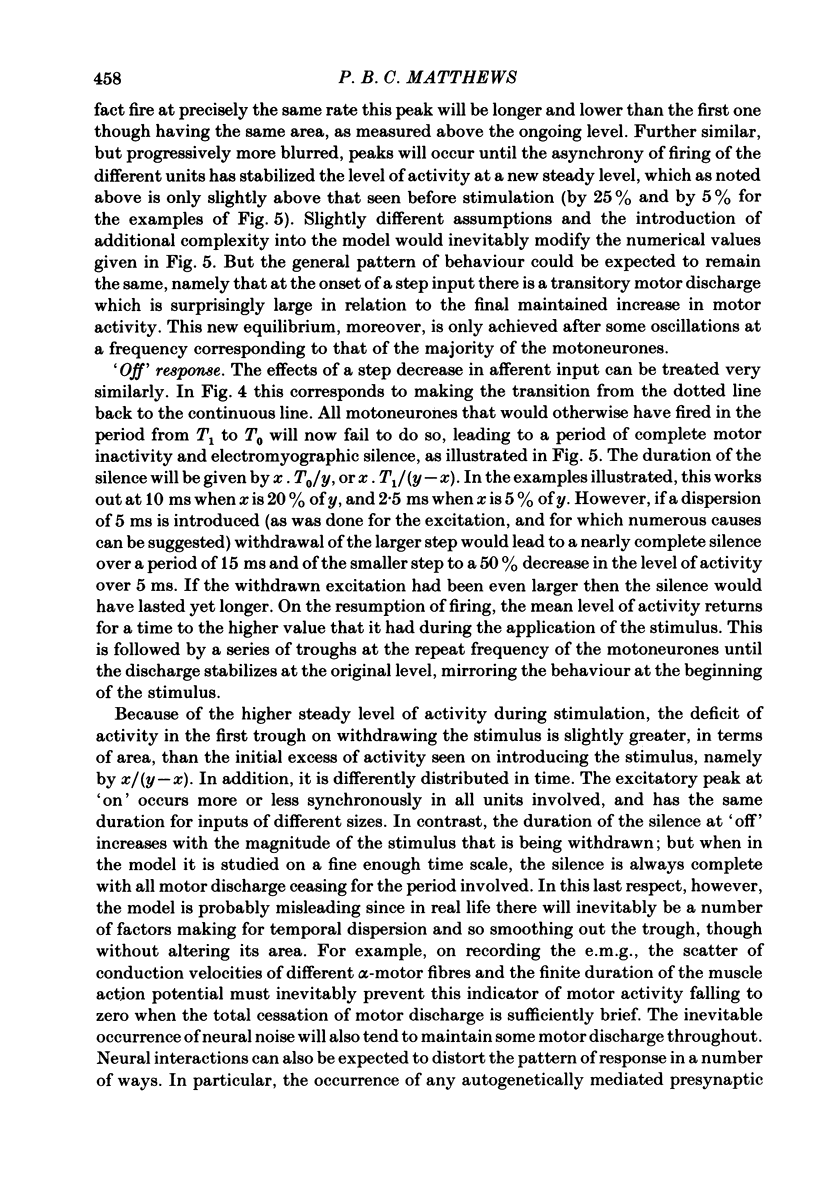
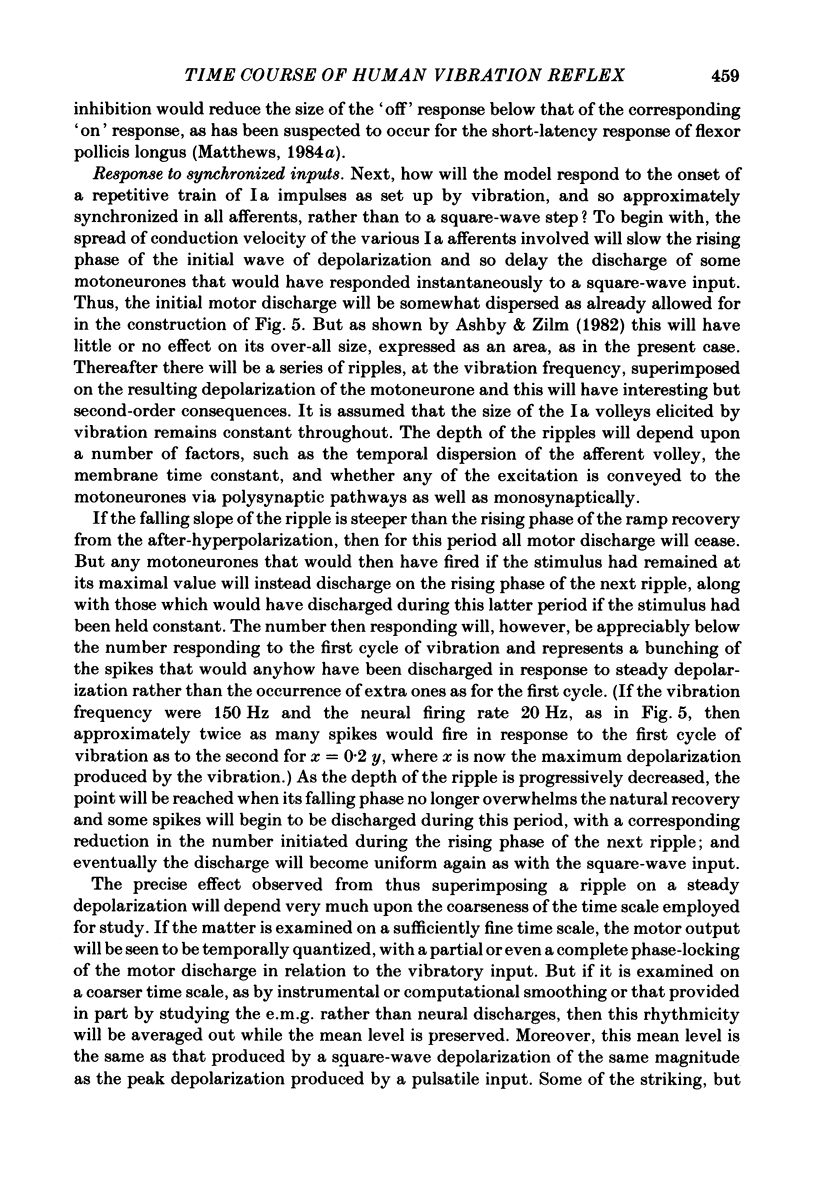
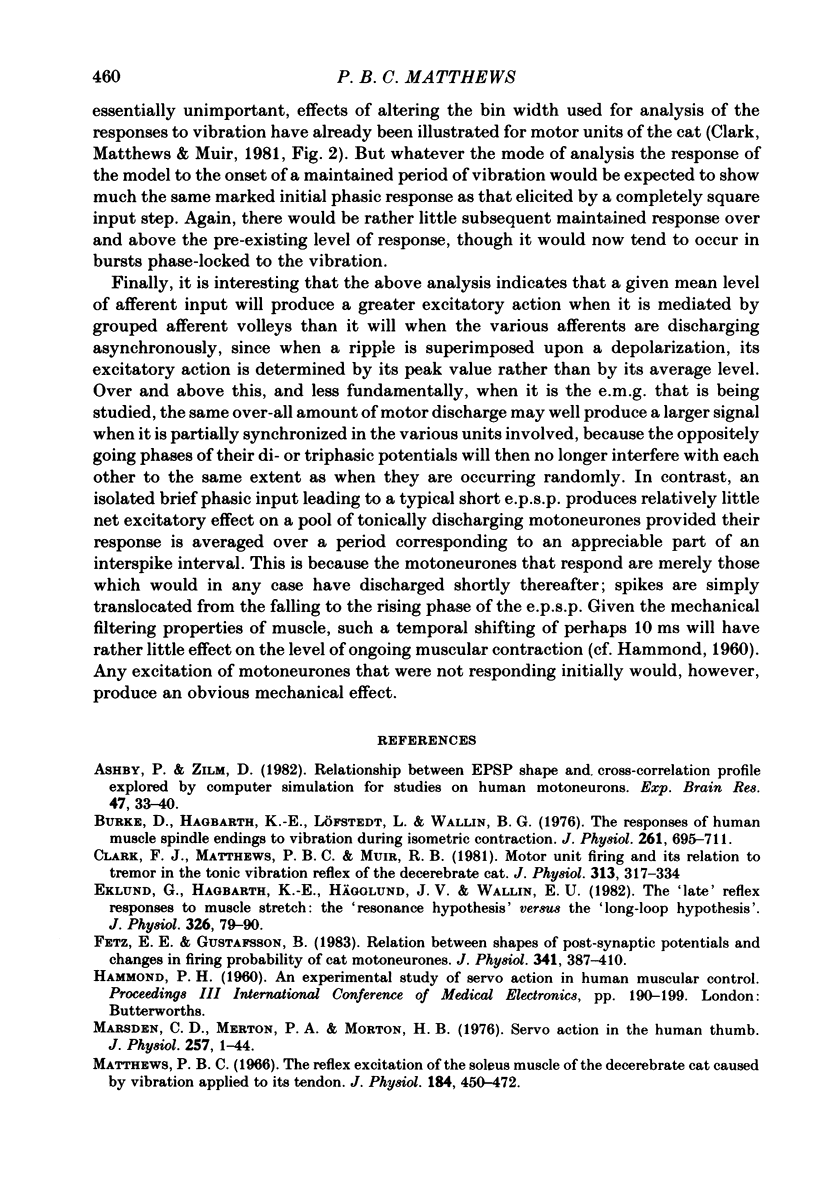
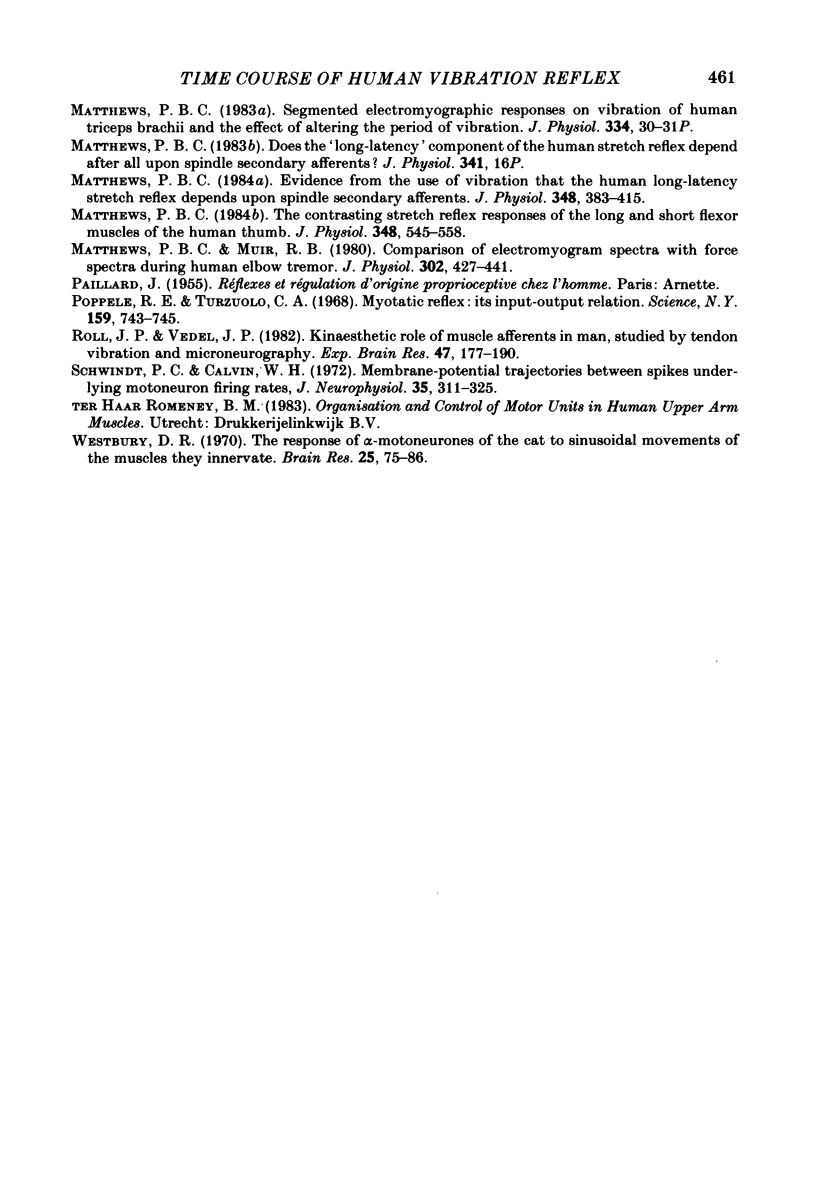
Selected References
These references are in PubMed. This may not be the complete list of references from this article.
- Ashby P., Zilm D. Relationship between EPSP shape and cross-correlation profile explored by computer simulation for studies on human motoneurons. Exp Brain Res. 1982;47(1):33–40. doi: 10.1007/BF00235883. [DOI] [PubMed] [Google Scholar]
- Burke D., Hagbarth K. E., Löfstedt L., Wallin B. G. The responses of human muscle spindle endings to vibration during isometric contraction. J Physiol. 1976 Oct;261(3):695–711. doi: 10.1113/jphysiol.1976.sp011581. [DOI] [PMC free article] [PubMed] [Google Scholar]
- Clark F. J., Matthews P. B., Muir R. B. Motor unit firing and its relation to tremor in the tonic vibration reflex of the decerebrate cat. J Physiol. 1981;313:317–334. doi: 10.1113/jphysiol.1981.sp013667. [DOI] [PMC free article] [PubMed] [Google Scholar]
- Eklund G., Hagbarth K. E., Hägglund J. V., Wallin E. U. The 'late' reflex responses to muscle stretch: the 'resonance hypothesis' versus the 'long-loop hypothesis'. J Physiol. 1982 May;326:79–90. doi: 10.1113/jphysiol.1982.sp014178. [DOI] [PMC free article] [PubMed] [Google Scholar]
- Fetz E. E., Gustafsson B. Relation between shapes of post-synaptic potentials and changes in firing probability of cat motoneurones. J Physiol. 1983 Aug;341:387–410. doi: 10.1113/jphysiol.1983.sp014812. [DOI] [PMC free article] [PubMed] [Google Scholar]
- Marsden C. D., Merton P. A., Morton H. B. Servo action in the human thumb. J Physiol. 1976 May;257(1):1–44. doi: 10.1113/jphysiol.1976.sp011354. [DOI] [PMC free article] [PubMed] [Google Scholar]
- Matthews P. B. Evidence from the use of vibration that the human long-latency stretch reflex depends upon spindle secondary afferents. J Physiol. 1984 Mar;348:383–415. doi: 10.1113/jphysiol.1984.sp015116. [DOI] [PMC free article] [PubMed] [Google Scholar]
- Matthews P. B., Muir R. B. Comparison of electromyogram spectra with force spectra during human elbow tremor. J Physiol. 1980 May;302:427–441. doi: 10.1113/jphysiol.1980.sp013254. [DOI] [PMC free article] [PubMed] [Google Scholar]
- Matthews P. B. The contrasting stretch reflex responses of the long and short flexor muscles of the human thumb. J Physiol. 1984 Mar;348:545–558. doi: 10.1113/jphysiol.1984.sp015124. [DOI] [PMC free article] [PubMed] [Google Scholar]
- Matthews P. B. The reflex excitation of the soleus muscle of the decerebrate cat caused by vibbration applied to its tendon. J Physiol. 1966 May;184(2):450–472. doi: 10.1113/jphysiol.1966.sp007926. [DOI] [PMC free article] [PubMed] [Google Scholar]
- Poppele R. E., Terzuolo C. A. Myotatic reflex: its input-output relation. Science. 1968 Feb 16;159(3816):743–745. doi: 10.1126/science.159.3816.743. [DOI] [PubMed] [Google Scholar]
- Roll J. P., Vedel J. P. Kinaesthetic role of muscle afferents in man, studied by tendon vibration and microneurography. Exp Brain Res. 1982;47(2):177–190. doi: 10.1007/BF00239377. [DOI] [PubMed] [Google Scholar]
- Schwindt P. C., Calvin W. H. Membrane-potential trajectories between spikes underlying motoneuron firing rates. J Neurophysiol. 1972 May;35(3):311–325. doi: 10.1152/jn.1972.35.3.311. [DOI] [PubMed] [Google Scholar]
- Westbury D. R. The response of alpha-motoneurones of the cat to sinusoidal movements of the muscles they innervate. Brain Res. 1971 Jan 8;25(1):75–86. doi: 10.1016/0006-8993(71)90568-3. [DOI] [PubMed] [Google Scholar]


